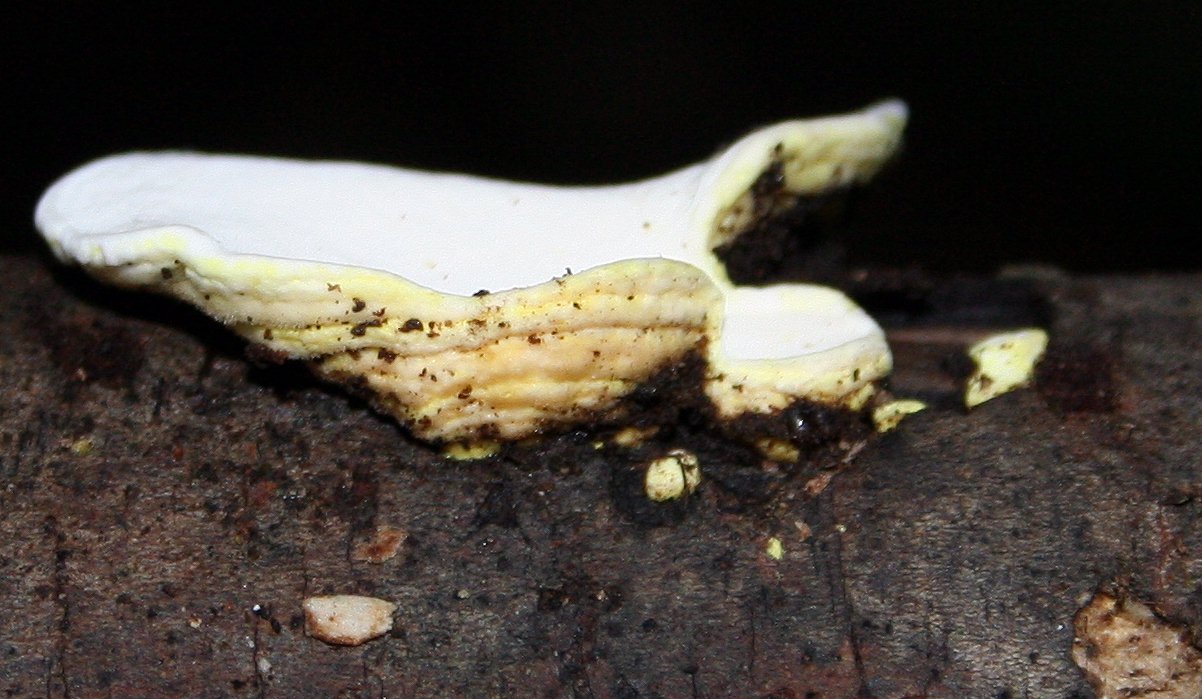- Antrodiella citrea
Taxobox
name = "Antrodiella citrea"

image_width = 250px
regnum =Fungi
phylum =Basidiomycota
classis =Agaricomycetes
ordo =Polyporales
familia =Steccherinaceae
genus = "Antrodiella"
species = "A. citrea"
binomial = "Antrodiella citrea"
binomial_authority = (Berk.) Ryvarden
synonyms = "Microporus citreus" (Berk.) Kuntze, [Revis. gen. pl. (Leipzig) 3(2): 495 (1898)]
"Polyporus citreus" Berk.
Polystictus citreus (Berk.) [cite journal |last=Cooke|first=MC |authorlink=Mordecai Cubitt Cooke |year=1886|title=Praecursores ad Monographia Polypororum |journal=Grevillea |volume=14 |pages=77-87]
Tyromyces citreus (Berk.) G. Cunn. [cite book |last=Cunningham|first=GH |year=1965|title=Polyporaceae of New Zealand |journal=New Zealand Department of Scientific and Industrial Research, Bulletin 164 |pages=p. 137]"Antrodiella citrea" is a
bracket fungus native to Australia, and New Zealand. [Buchanan, P.K.; Ryvarden, L. (2000). An annotated checklist of polypore and polypore-like fungi recorded from New Zealand. New Zealand Journal of Botany 38(2): 265-323]It was originally described as "Polyporus citreus" by English botanist
Miles Joseph Berkeley in 1872, [cite journal |last=Berkley |first=MJ |authorlink=Miles Joseph Berkeley |year=1872|title=Australian fungi, received principally from Baron F. von Mueller and Dr. R. Schomburgk |journal=Journal of the Linnean Society. Botany |volume=13 |issue= |pages=155-77] and has undergone several name changes before being placed in the genus "Antrodiella " by L. Ryvarden in 1984. [>cite journal |last=Ryvarden|first=L |year=1984|title=Type studies in the Polyporaceae 16. Species described by J.M. Berkeley, either alone or with other mycologists from 1856 to 1886 |journal=Mycotaxon |volume=20 |issue=2 |pages=329-63]Up to 2 cm (0.8 in) in diameter, the soft fruiting bodies are found on the underside of dead tree branches, particularly of "
Eucalyptus " trees; they have the texture of chamois. The pored spore-bearing surface is white, while the upper surface is bright yellow. Thespore print is white, and the smooth oval spores are around 2.5 x 4.5 μm. [Fuhrer B. (2005) A Field Guide to Australian Fungi. Bloomings Books. ISBN 1-876473-51-7 p. 247]References
Wikimedia Foundation. 2010.
